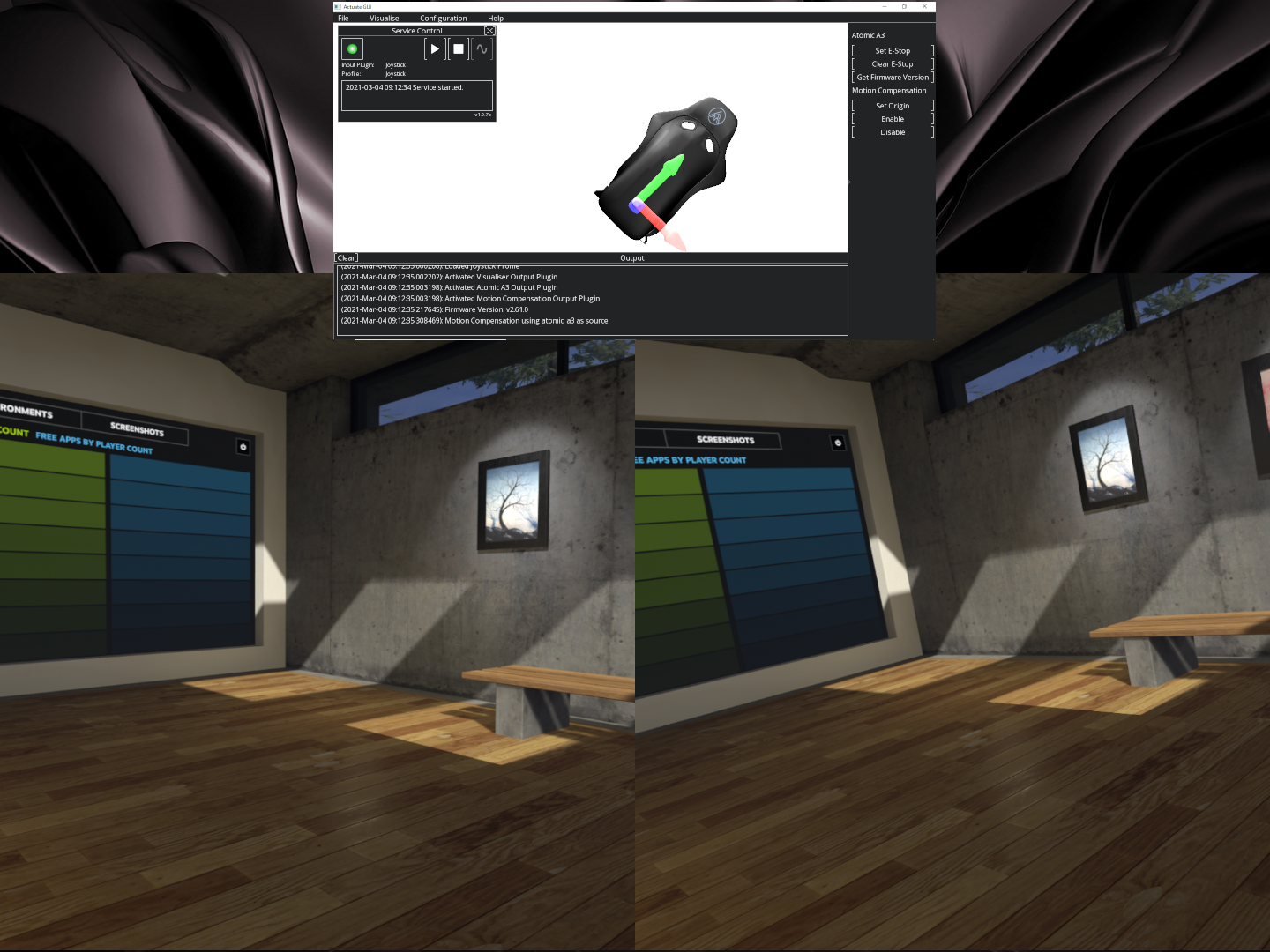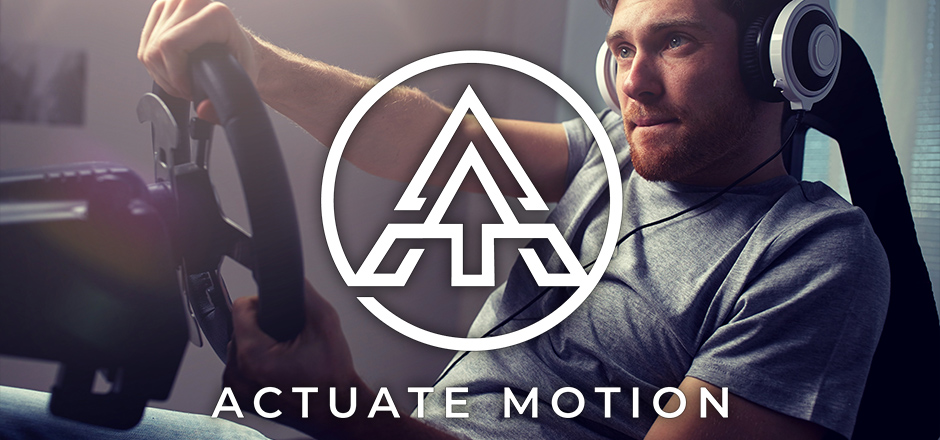VR Motion Compensation
One of the things we get asked about a lot is motion compensation for use with VR.
When you use a motion simulator with VR, as the VR system tracks movement of the HMD it not only picks up the movement of the player’s head, but also the movement of the simulator.
Ideally, we want the player to only feel the forces created by moving them in relation to gravity, and not see the movements too. Unfortunately, if the user is aware of the movements that the simulator is creating, then it can break the illusion, and therefore sometimes break immersion.
One symptom of both feeling and seeing the movement in driving games or simulations is that people react to the acceleration forces as actual movement of the vehicle. This usually results in wild overcompensation with the steering wheel and the player entering into a tank slapper!
This is where the motion compensation comes in. As the name suggests, the idea is that the positional data of the simulator is acquired, and the VR view is adjusted by subtracting the positional data to compensate for it.
Due to demand, we’ve been working on our own motion compensation solution that integrates with SteamVR and Actuate. There are two big advantages to this approach…
- No requirement for additional trackers. The simulator positional data can be provided by Actuate, directly from the simulator.
- Integrating with SteamVR means that it will work with any supported title that uses SteamVR for it’s VR support.
We have now reached the beta stage of the development. We have initially focused on the Atomic A3, mainly as most of our user base is using this simulator. Right now we have a few customers trialing the software so far, and we’re really looking forward to the initial feedback. Other simulator support will follow as soon as possible.

The following image shows screenshots in SteamVR home taken with the Atomic A3 at full roll to the right. The VR headset was attached to the headrest of the simulator so is in the same relative position in both images.
The bottom left hand side of the image shows the view when the compensation is running, and the bottom right hand side the view when the compensation is not running.

I have to say, having played some racing titles with and without the motion compensation, I’ve been amazed at how subtle it looks to the outsider watching on, but when you are in the experience the difference feels very pronounced. I would describe the main difference as a feeling of increased stability of the vehicle. It feels so much less frantic to drive.
We’d love to hear from you if you use VR and motion together and like the idea of giving motion compensation a whirl. You can get hold of us here
